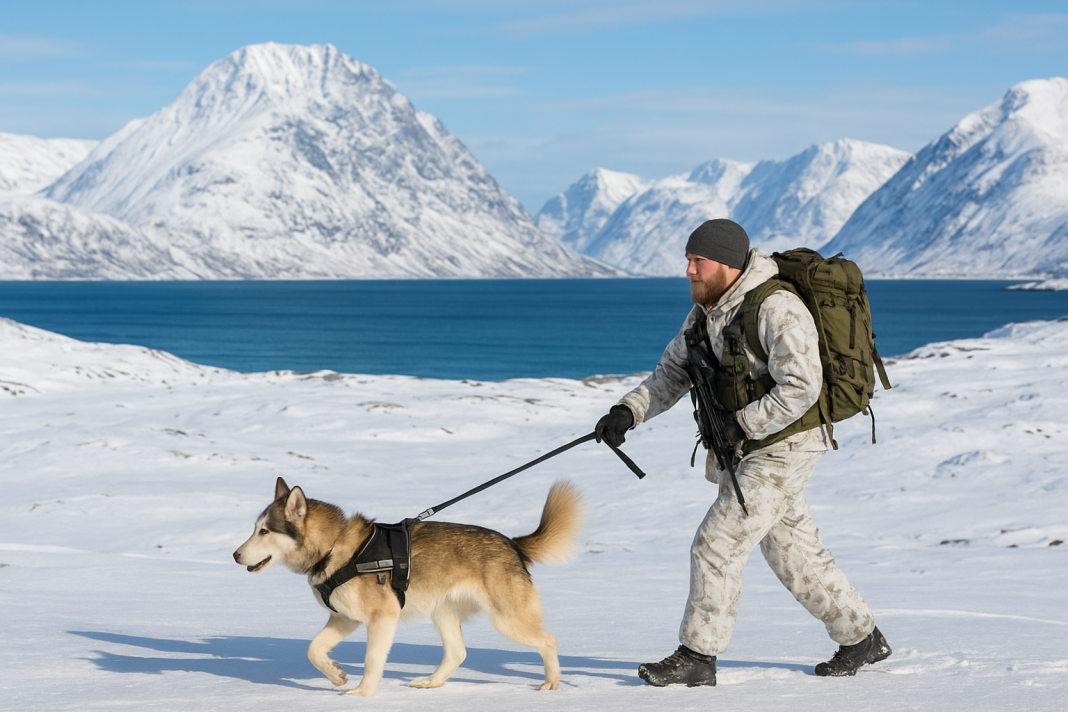Far from the crowded cities of Europe, the Danish Army stations soldiers in one of the coldest and most remote corners of the world — Greenland. Their daily life involves surviving storms, maintaining outposts, and keeping watch over an icy land that is becoming more important to world powers. The island, mostly covered by ice and surrounded by the Arctic Ocean, is now at the center of growing military attention.
Rising Military Tension in the Arctic
The Danish Army troops stationed at bases like Mestersvig face harsh conditions. They clear snow, repair damaged buildings, and even train sled dogs for long patrols through frozen terrain. But their mission has grown beyond just survival and maintenance. Denmark has begun to expand its military presence across Greenland’s vast territory, reacting to new threats and an increase in Russian military activity in the Arctic region.
In recent years, intelligence services have warned that the Arctic could become a hotspot for military competition. Reports indicate that the risk of tension between NATO and Russia has grown significantly. Denmark, as a NATO member, has started strengthening its northern defenses. This includes new radar systems, air warning networks, and more patrol aircraft capable of monitoring submarines hidden under the polar ice.
Greenland’s 13 billion-barrel oil discovery sparks U.S. and Canadian scramble for Arctic control
To prepare for these challenges, the Danish Army launched its largest military exercises in Greenland. These drills, which once focused on rescue and disaster response, are now designed to simulate combat and defense operations. The shift marks a clear change in how seriously Denmark views the possibility of conflict in the Arctic.
Russian Expansion and Danish Army Vigilance in the Arctic
Russia has been increasing its military strength in the Arctic for years. The country has built new bases, reopened old ones, and expanded its submarine fleet, giving it a major advantage in cold-weather operations. Its northern coastline now hosts airstrips, radar systems, and weapons installations, making it the dominant military power in the region.
Russian nuclear submarines can travel quietly beneath the Arctic ice, making them difficult to detect. If these submarines cross through the narrow sea corridor between Greenland, Iceland, and the United Kingdom — known as the GIUK Gap — they could reach the North Atlantic, where tracking them becomes nearly impossible. This area is considered one of NATO’s most sensitive zones.
Greenland’s 13 billion-barrel oil discovery sparks U.S. and Canadian scramble for Arctic control
Russia denies being a threat, but it continues to expand and modernize its Arctic fleet with new submarines and advanced missile systems. These moves have raised concerns among NATO members, including Denmark, about shifting power in the north.
Greenland’s position between North America and Europe makes it strategically vital. Once a key base during World War II and the Cold War, it still hosts several Danish Army installations that monitor Arctic activity and protect NATO interests.
Defending the vast island remains difficult. Most of Greenland’s 57,000 people live along the coast, separated by harsh terrain and extreme weather. Despite these challenges, the Danish Army is strengthening its Arctic presence, especially in the east, where Russian movements are closely watched.
Strengthening Greenland’s Defense With the Danish Army
To address rising tensions, Denmark has committed billions in defense funding, adding new Arctic ships, icebreakers, long-range drones, and upgraded radar systems. Special forces and patrol units under the Danish Army are being strengthened to better monitor Greenland’s remote areas.
Among these, the Sirius Patrol plays a vital role. This elite dog-sled unit travels thousands of kilometers across snow and ice to track foreign activity, assist in rescues, and maintain Denmark’s sovereignty in the far north. Operating in extreme cold and isolation, the patrol represents the backbone of Arctic defense.
Military exercises in Greenland have grown more advanced, involving allies such as France, Germany, Norway, and Sweden. Helicopters, aircraft, and Danish Army troops train to secure key locations like Kangerlussuaq Airport and coastal facilities that could become strategic targets.
These operations also affect local life. While many residents welcome increased security, some worry about environmental impact and the revival of Cold War–era memories. To build cooperation, Denmark has launched training programs that teach Greenlanders survival and military skills, paving the way for a dedicated local defense unit under the Danish Army.
Despite harsh conditions, the Danish Army continues to adapt. Greenland’s icy frontiers have evolved into a vital defensive line for Europe and North America, demanding endurance and readiness in one of the world’s most unforgiving environments.
